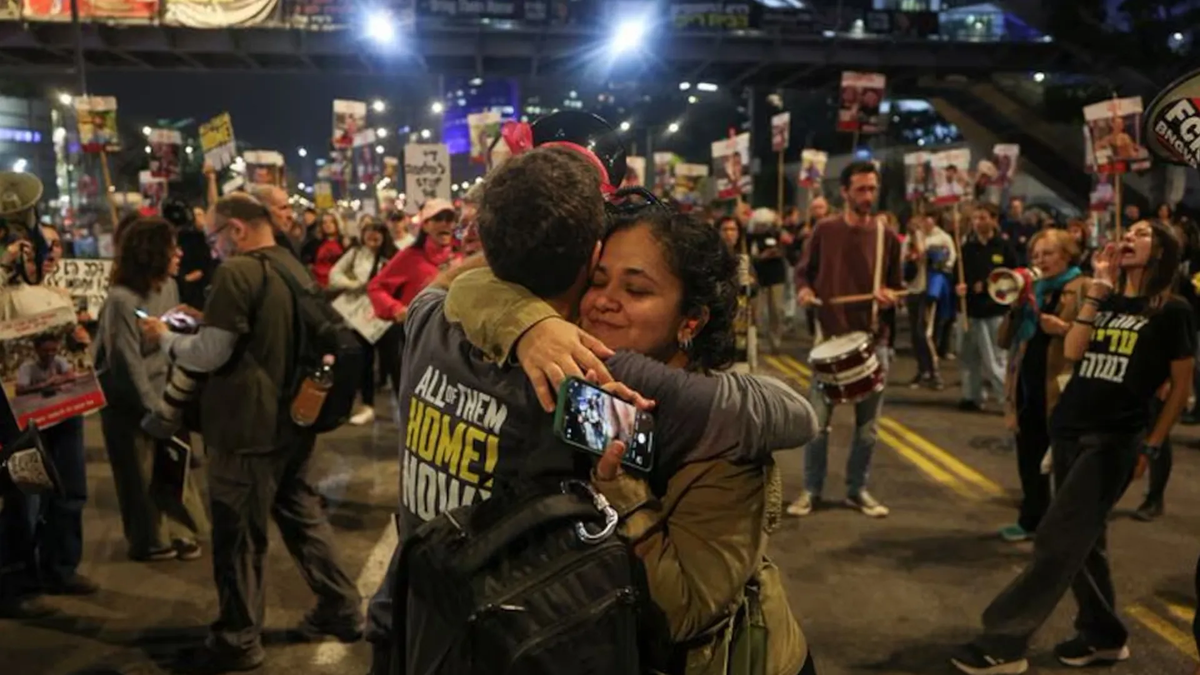The fear of the monstrous being that presents itself to our stupor, the sinister slipping into everyday life, sexual encounters with ghosts are some of the themes that run through the twelve stories of “A sunny place for gloomy people” (Anagram), new book Mariana Enriquez.
The consecrated narrator returns to the story, where it began with “The dangers of smoking in bed” and “The things we lost in the fire”and after his novel “Our part of the night” who, after the Herralde Prize, continued to add laurels, and his theatrical shows “Don’t bring flowers”. Upon her return, then after a presentation tour in Spain and before doing them in the United States, we spoke with her.
Journalist: Why did you return to stories?
Mariana Enriquez: It costs me a lot and it takes me a long time to write a novel. “Our Part of the Night” was published in 2019, and then it was not in another novel. The pandemic came and, unlike other writers, I wrote absolutely nothing. When I got back to it, I wrote the non-fiction book “Because Too Much Is Not Enough,” which was published in Chile. A story about being a fan. Later, with all that time of not writing fiction, I had a lot to say and tell. I started a novel, but I wanted to show what I was doing and I didn’t want to wait to finish the novel. So I returned to the genre in which I feel most contained.
Q.: Is horror, neo-gothic or neo-romantic literature a deepening of magical realism?
I: For me, magical realism is a literary-political category that belongs to a Latin America where there was a hopeful vision. It is contemporary with the Cuban Revolution and prior to Allende; a moment where everything seemed possible. Current literatures, although they continue to think about that folklore, are plagued by the failure of the idea of Latin America as a continent of possibilities, they see it as a continent of despair where daily life is very difficult, and political life more difficult. There is no longer that pleasant feeling of the future that is read in “One Hundred Years of Solitude.” García Márquez’s magical realism is still joyful and joyful in critics. But, at the same time, there is a germ in magical realism, which some writers, such as the Uruguayan Fernanda Trías, discovered and are claiming. It is dark magical realism, the one that is in the works of Onetti and the Chilean Donoso, with those upper-class monsters from “The Dark Bird of the Night,” which I worked on and cited in “Our Part of the Night.” , in Sabato, someone I don’t like, but I do like a lot “About heroes and tombs, which also has a lot of Gothic. That dark magical realism was less attractive and less exportable.
Q: How do you capture the horror and the strange?
I: They arise from the story. In “A Local Artist,” it emerges from Yolk, that bug. The story appeared after thinking a lot about some very disruptive paintings that I saw in a cultural center that they made in an abandoned station in a town in the province of Buenos Aires where a train no longer passes. They set up the place as a tourist resort. In front of the facade of a house I felt that something was hidden. That’s how I came to that monster that is the beating center of everything, even the slugs have to do with it. When I was a girl, postcards of painters without hands arrived at my house and I thought they were sinister beings, homunculi. Later I learned that they were people who had had some problem and painted with their feet or their mouth. Everything comes together and I go to the meeting setting up the scene, and in the end the explanation ends up being horror. At first I started from the horrifying situation and put together reality, now I put together reality until it appears.
Q.: Your stories, even if they take place in Los Angeles, are linked to the tradition of the fantastic in our literature, Cortázar…
I: If I have to look for an Argentine reference, the story “The Woman Who Suffers” has ties with “Lejana” by Cortázar, as well as “Metamorfosis”, with those neurotic women on the verge of the grotesque, it is very Silvina Ocampo. It has to do with a mother language that we have very incorporated. To learn to write dialogues I went to Hebe Uhart, to Manuel Puig, to orality in Borges, and my style has nothing to do with any of the three. Puig always told me that the Argentine writer’s problem is that he doesn’t listen, that he is very fascinated with his ideas. In the story “Julie”, that gringo girl who has sex with ghosts, I learned the real and customary dialogues of the confrontation between the Argentine family with which she comes from the United States.
Q: Is there a Latin American boom of the strange and horror?
I: He’s having a great time with different voices. I really like the novel “The Eye of Goliath” by Diego Muzzio, those by Luciano Lamberti, who explores horror and is the one who best writes about violence, Juan Mattio and his “Materials for a Nightmare”, and there is the Bolivian Maximiliano Barrientos who makes a weird that mixes both cultural and literary traditions.
Q.: Leave aside the writers who dedicate themselves to the horror genre.
I: I named the men first to point out that it is a plural and global phenomenon, which has to do first with the time, and then with a search and an editorial interest. In women writers there is a lot of autofiction, horror, macabre, horror, fanatic, post-romantic gothic. Many divisions. There is Mónica Ojeda who does something very poetic and very repulsive; María Fernanda Ampuero with very short and very impressive stories; the Cuban Elaine Vidal Madruga who is extraordinary and like a Martian on the island. And Samanta Schweblin who makes a very refined and very elegant fantastic work. And people with similar things, everything is reproduced and has the influence of cinema and television.
Source: Ambito
I am an author and journalist who has worked in the entertainment industry for over a decade. I currently work as a news editor at a major news website, and my focus is on covering the latest trends in entertainment. I also write occasional pieces for other outlets, and have authored two books about the entertainment industry.




